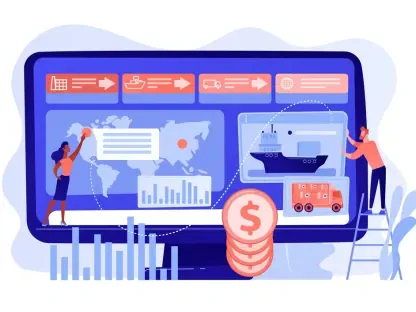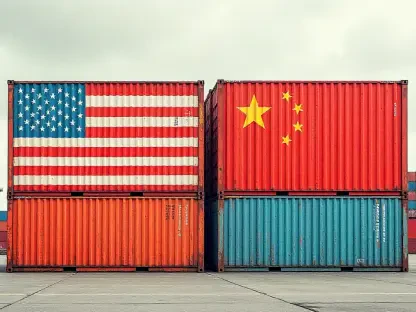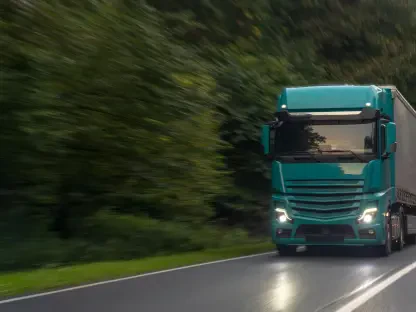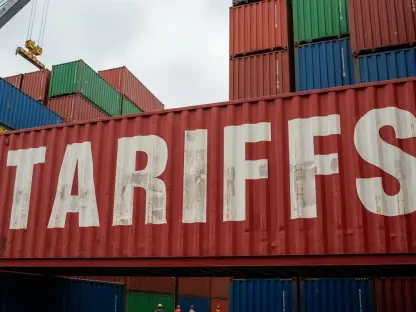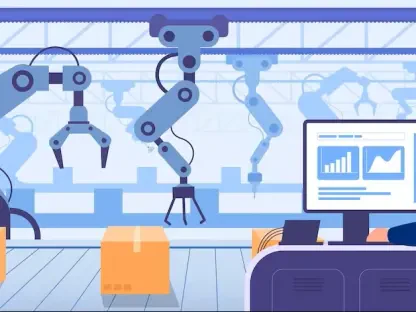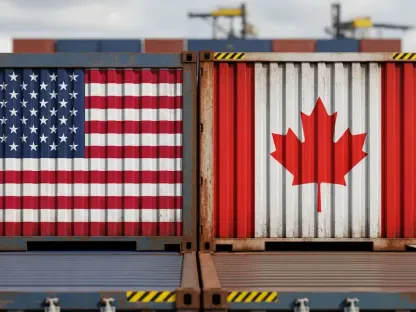Setting the Stage: A Critical Moment for Trucking
The trucking industry, a cornerstone of the American economy responsible for transporting over 70% of the nation’s freight, finds itself at a precarious crossroads in 2025, facing challenges that threaten its stability. Amid a historic freight recession now stretching into its third year, carriers face shrinking margins, stagnant rates, and a demand slowdown that jeopardizes the stability of supply chains nationwide. This market analysis delves into the economic pressures, regulatory complexities, and operational bottlenecks shaping the sector’s trajectory. With rising costs outpacing inflation and new compliance mandates looming, understanding these dynamics is vital for stakeholders aiming to navigate the turbulence. The purpose of this examination is to uncover actionable trends and projections that can guide strategic decision-making in an industry integral to national trade and consumer access.
Market Dynamics: Unpacking Trends, Data, and Future Outlooks
Economic Strain: Freight Recession Tightens Its Grip
The dominant force impacting the trucking market in 2025 is a persistent freight recession, characterized by flat rates and declining demand across key sectors like manufacturing and retail. Per-mile operating costs have surged ahead of inflation, compressing profit margins for fleets of all sizes and pushing some smaller carriers toward insolvency. Data indicates that operational expenses, including a notable spike in insurance premiums over recent years, have created a financial vise, limiting the ability of companies to reinvest in equipment or workforce development. This economic hardship signals a broader concern for the supply chain, as reduced carrier capacity could lead to delays and higher consumer costs in the near term.
Regulatory Landscape: Compliance Costs Mount
Regulatory pressures are reshaping the competitive environment for trucking firms, adding layers of cost and complexity to daily operations. Updates to safety programs and stricter diesel emissions standards are anticipated to drive up equipment and maintenance expenses, particularly for smaller operators with limited capital. These mandates, while aimed at enhancing safety and environmental outcomes, often disproportionately burden mid-tier carriers, creating a market divide where larger fleets with deeper resources gain an edge. The balance between compliance and financial viability remains a critical tension point, with potential impacts on market consolidation as smaller players struggle to adapt.
Operational Challenges: Infrastructure and Workforce Gaps
Beyond economic and regulatory hurdles, operational inefficiencies continue to plague the trucking sector, affecting service delivery and driver morale. Truck parking shortages persist as a major issue, with inadequate safe resting spots leading to non-compliance with rest regulations and heightened safety risks. Meanwhile, driver compensation has failed to keep pace with rising living costs, exacerbating retention challenges in a market already grappling with labor shortages. These systemic issues, often varying by region, underscore a fragmented operational landscape where addressing infrastructure deficits and workforce needs is essential for maintaining market stability.
Technological Horizons: AI and Sustainability as Game Changers
Looking toward emerging trends, technology and sustainability are poised to redefine the trucking market over the next few years, from 2025 to 2027. The integration of artificial intelligence in logistics offers potential for route optimization and fuel efficiency, yet it sparks debate over automation’s impact on driver jobs, with market sentiment split between optimism for innovation and concern for workforce displacement. Additionally, stricter emissions rules signal a shift toward greener fleets, likely influencing capital expenditure as carriers invest in compliant vehicles. These dual forces of tech adoption and environmental focus are set to create a transformative wave, reshaping competitive dynamics in the sector.
Market Projections: Navigating a Path Through Uncertainty
Projecting forward, the trucking market faces a challenging yet adaptable future if strategic responses are prioritized. Economic recovery remains uncertain, with freight demand expected to lag unless broader consumer spending rebounds significantly. Regulatory costs are likely to persist as a headwind, potentially accelerating mergers among smaller carriers unable to shoulder compliance burdens. However, technology adoption could serve as a differentiator, with early adopters of AI and sustainable practices gaining market share. The interplay of these factors suggests a polarized industry outlook, where resilience will depend on balancing immediate cost management with long-term investment in innovation and workforce stability.
Reflecting on the Road Traveled: Strategic Imperatives for the Future
Looking back on the analysis conducted in 2025, the trucking industry confronted a multifaceted crisis defined by a prolonged freight recession, mounting regulatory demands, and deep-rooted operational challenges. The market trends revealed a sector under strain, yet brimming with potential for transformation through technology and sustainability initiatives. Key implications pointed to a growing disparity between large and small carriers, driven by uneven access to resources for compliance and innovation. For the path ahead, stakeholders were encouraged to prioritize collaborative advocacy with policymakers to shape feasible regulations, while investing in driver welfare through better compensation and infrastructure support like expanded parking facilities. Embracing data-driven tools for operational efficiency and cautiously integrating AI with workforce training emerged as critical steps to ensure competitiveness. These actionable strategies offered a blueprint for navigating past turbulence, positioning the industry to not only survive but redefine itself in the evolving economic landscape.


